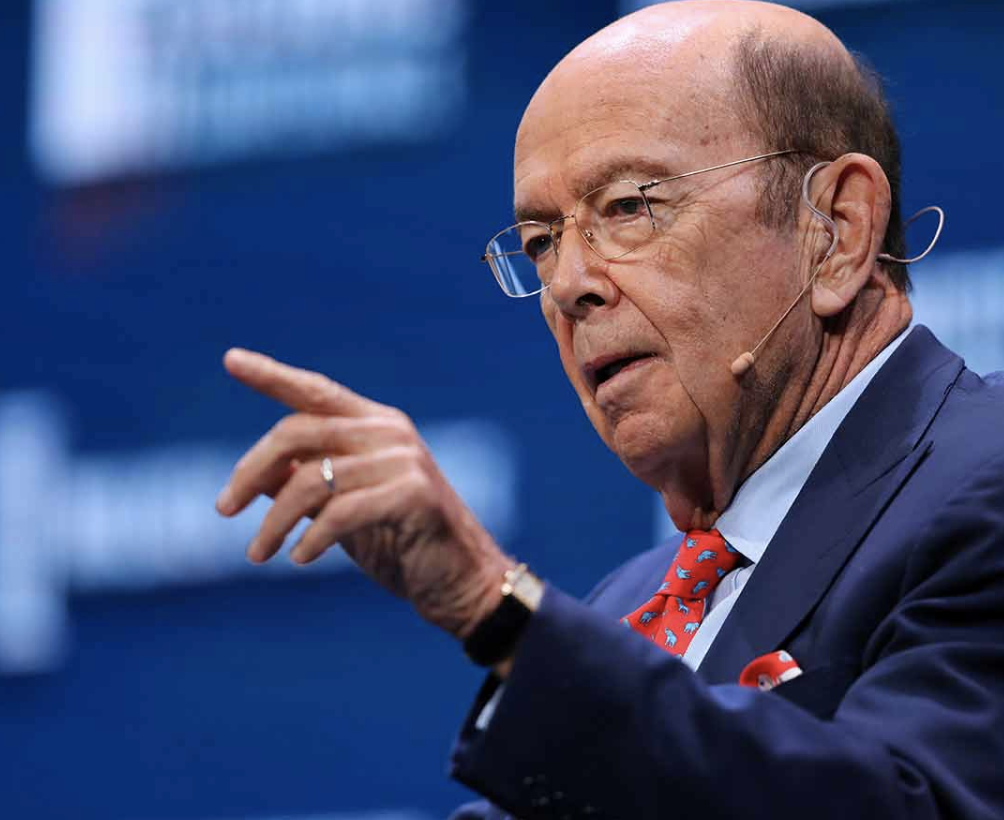Ross Meets With Top Chinese Official As Mid-Level Trade Talks Spark More “Optimism”
Perhaps to help quash rumors that they’re not taking the trade talks seriously, the Chinese leadership (according to President Trump) recently offered Trump an important concession to help facilitate the trade talks: They allegedly agreed to hold the next round of high-level talks on American soil (perhaps Mar-a-Lago or even President Trump’s Doral golf club might be floated as locations).
But in the mean time, scattered talks, over the phone and in person, have continued. But in a sign that the president might be growing tired of his top trade negotiators and surrogates, Trump reportedly dispatched a “downgraded” delegation led by US Commerce Secretary Wilbur Ross and National Security Adviser Robert O’Brien to meet Chinese Premier Li Keqiang Monday afternoon at the 10-member Association of Southeast Asian Nations in Bangkok, according to a Bloomberg report. The meeting took place hours after Ross, who was sidelined early on during the trade talks reportedly because Trump felt he had mishandled early negotiations, tried his hand at jawboning and told a meeting of business leaders that the US was “very far along” with “Phase One” of the trade deal with China.
Then, in an interview with Bloomberg on Sunday, Ross “expressed optimism” about the prospects for talks with China this month before working on additional phases. He also said licenses would be coming “very shortly” for US firms to sell components to Huawei, an issue that has, so far, stuck in China’s craw.
To be sure, President Trump has been promising to issue waivers for Huawei, which wound up on a Commerce Department blacklist earlier this year prohibiting US firms from selling critical components.
Trump and Vice Premier Liu He insisted that “Phase 1” was pretty much finished, Ross offered a more “nuanced” take…insisting that the continuing talks on “Phase 1” are merely Washington doing its due diligence, and nothing more (he also seems to have left out “Florida” from the list of possible locations for the next round of top-level talks).
Ross called the Phase One agreement “particularly complicated” and said the US was “making sure that each side has a very correct and clear, detailed understanding of what each side has agreed to.” Iowa, Alaska, Hawaii and locations in China were all possible places for Trump and President Xi Jinping to sign the deal after the cancellation of this month’s Asia-Pacific Economic Cooperation summit in Chile.
“We’re in good shape, we’re making good progress, and there’s no natural reason why it couldn’t be,” Ross said. “But whether it will slip a little bit, who knows. It’s always possible.”
During his appearance on Monday, Ross reportedly insisted that the White House remained “fully committed” to the Indo-Pacific region, as Trump’s absence and “America First” policies that recently inspired the pullout from Syria have seemingly shaken the faith of other US allies around the world.
But most importantly, at least as far as the fate of the talks is concerned, Ross reportedly remained “non-commital” about the possibility of the administration cancelling the next round of planned tariff hikes in December. Ross said it will depend on Chinese legislation and an enforcement mechanism.
Trump agreed to cancel a round of tariffs set for October just days before they were set to take effect last month. The bigger test this time around will be whether the US can get the ‘partial’ trade deal that Trump once loathed down on paper before mid-December.
Meanwhile, the US-China deal wasn’t the only trade deal being discussed in Bangkok…
Asian leaders were separately expected to announce a breakthrough on another trade pact, the China-backed Regional Comprehensive Economic Partnership, at the end of the meetings. It remained uncertain whether the pact would include India, which jeopardized it with last-minute requests.
Ross in the interview downplayed the significance of RCEP, which would lower tariffs in an area that represents roughly a third of the global economy, and defended U.S. engagement in Asia after Trump skipped the Asean meetings for a second straight year.
Contentious issues remain and the terms aren’t yet known, but RCEP would at least partly fill a trade gap left by Trump’s 2017 withdrawal from the Trans-Pacific Partnership. Southeast Asia collectively has the world’s fifth largest economy and has struggled to wade through the economic fallout of U.S.-China trade tensions.
The message is clear: Beijing isn’t waiting around for Washington to make up its mind.
Tyler Durden
Mon, 11/04/2019 – 06:30
via ZeroHedge News https://ift.tt/32d11ZC Tyler Durden
